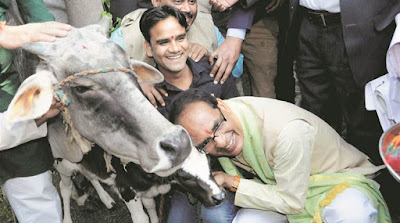It was hardly surprising when star comedian Kapil Sharma tweeted a
bribe complaint against Brihanmumbai Municipal Corporation officials. At the
same time many questioned what a Prime Minister has to do with graft charge
against officials of a local municipal body and as the elected head of the
country PM’s concerns are much larger issues affecting the country. While that
may be true the fact is that even the Prime Minister’s intervention could
hardly have done anything much beyond saving the day for Sharma to address the
larger malaise ailing our municipal bodies. In India, like elsewhere some
departments are inherently corrupt, municipal bodies being one of them. It
doesn’t matter where and in which cities or state these municipal bodies are
situated, one common thread connecting almost all of them is that they are all
highly graft-prone.
Let’s take the case of BMC. The body is one of the most cash rich
municipal bodies in the country with an annual budget of whooping Rs. 37,000
crore. Controlled by the Sena-BJP alliance it covers an area of 480.24 sq kms
and touches lives of more than 1.2 crore Mumbaikars daily as per the census of
2001. Among many other things needed to create and maintain the megapolis’
civil infrastructure, the agency is also tasked with business licensing, health
services and disaster management.
It is no more a classified fact that corruption is well entrenched
in the BMC. So much so that a 2005 Transparency International Report had to
conclude that municipal services in Maharashtra including the BMC rank among
the top five corrupt services in the country. It does not stopped there, in a
stinging indictment of the agency a division bench of Bombay high court in
September 2011 called it as one of the most corrupt institution. Maharshtra’s
own Anti-corruption bureau in its annual report ranked it a top offender in
corruption cases in 2008.
Time and again claims have been made by the state government and
top BMC officials that they are doing as much as they can to get the agency rid
of the malaise, but much of it has not got beyond a mere lip service. The
seriousness of their efforts was laid bare recently when a RTI reply showed
that the agency did not initiated any action against as many as 27 officials
who were found to be involved in corruption cases between 2005 and February,
2016 but rather reinstated some of them. It is on record that every year a
large number of BMC officials are trapped and arrested for demanding and
accepting bribes. A news report published today says that just in the past one
year, the state ACB has arrested 20 people working for or associated with the
civic body for graft charges.
It is not just about the BMC, the fact is it’s just one of the
symbols, and governments world over are struggling to find a way out to get rid
of corruption in local governance in their respective countries. Take a name,
Africa, Latin America, Asia, even European countries - almost all of them are
struggling to cope with the graft affliction in their local governance. Forget
treatment, in reality with time scams are becoming larger, the corruption money
is growing exponentially from quite a few lacs to now in hundreds of crores.
The question also is that why it is so challenging to the extent
of nearly impossible to get BMC rid of the corruption cancer? Let’s take it one
by one:
- Size: Is one of the largest local governments in the Asian
continent with more than 1.2 crore population under its wings. With more
officials, it is harder to keep tabs on each one and establish a decent
administration and to monitor their activities.
- Politics: BMC has an established political culture with
politicians brazenly known to influencing plum postings with the most lucrative
departments being Building Proposal Department, Slum Rehabilitation and Road
Construction. Attempts to rein in the corrupt officials have stumbled due to
political interference and had to be abandoned.
- Transparency: While of late rules have been tweaked to ensure greater
transparency but not much has changed. In 2010 CM Prithviraj Chavan said
"The BMC lacks transparency”.
- Accountability: There’s no proper and established mechanism to fix
responsibility. For eg. engineers intentionally delay sanctioning projects to
pressure builders to pay up.
So, what is the solution? No one will disagree to the fact that
Mumbai with all its manifestations still remains the singular super-tall symbol
of a rising aspirational India. The Maximum City accounts major portion of India's
foreign trade and government revenue, from being one of the foremost centers of
education, science and technological research and advancement. The soft power
of its cinema industry has mesmerized millions world over and has helped in
nation’s global outreach. And therefore leaving its local governance into
status-quo mode does not bode well for the future of the city.
The fact is in days to come we will see more steady devolution of
powers from the centre down to the municipal level. From health, education to
social welfare and commercial licensing, municipal agencies are now playing a
far greater role in devising and delivering key public services to the last
mile.
First and foremost a strong political will to change things
coupled with transparency and active citizen participation is a need of the
hour. A proper auditing and monitoring must be ensured to achieve
accountability and transparency. And lastly, a size as humongous as the BMC is
not conducive to counter corruption. The smaller, the better governance.
@rajivjournalist





